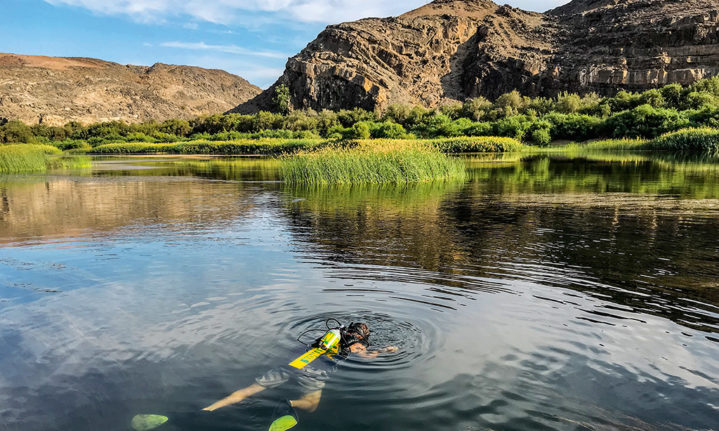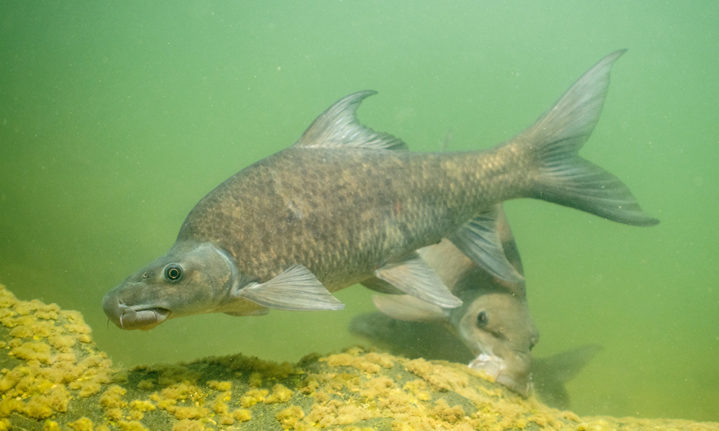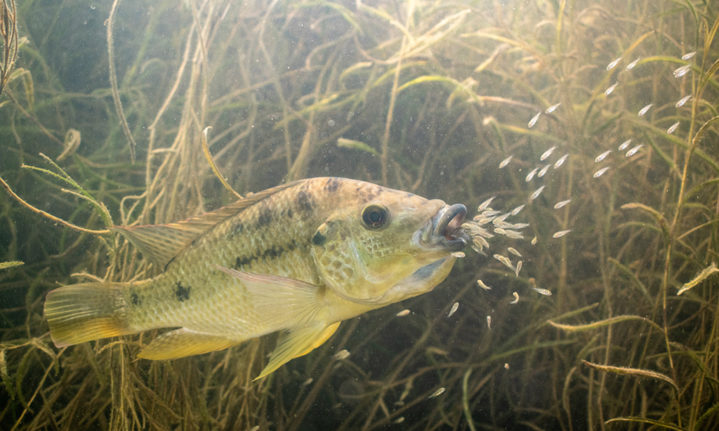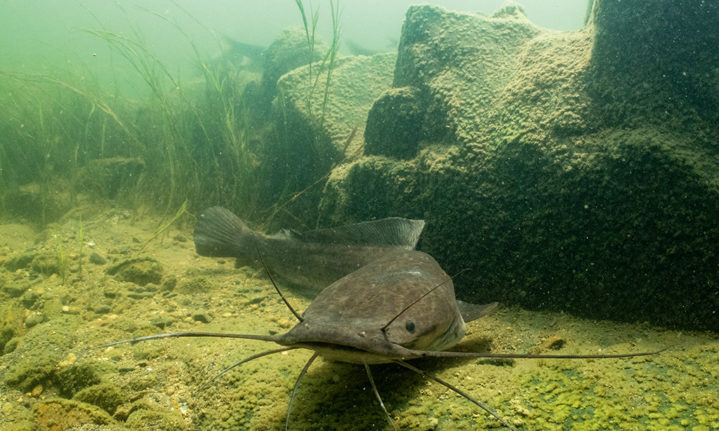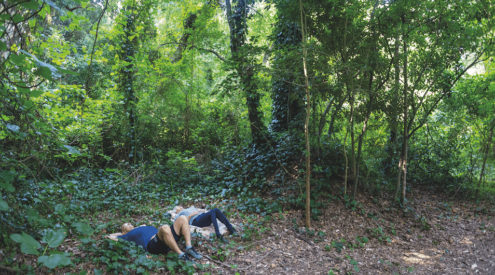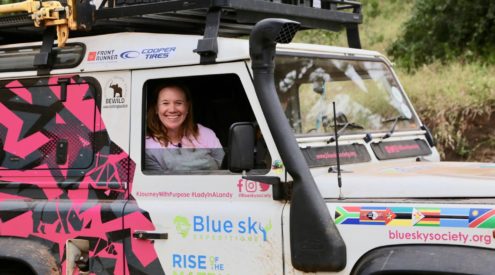Having received reports of unusually clean water in the Orange River, and with only four days available, my dive buddy, Zak O’Leary, and I hit the road north. We were towing a 4×4 trailer loaded to the gunwales and arrived at Richtersveld Wilderness Camp to overcast skies and an afternoon thunderstorm. We ran down to the camp jetty to check the visibility. The sandy river bed two-and-a-half metres below the surface was clearly visible and we were good to go.
Words & photographs by Jean Tresfon
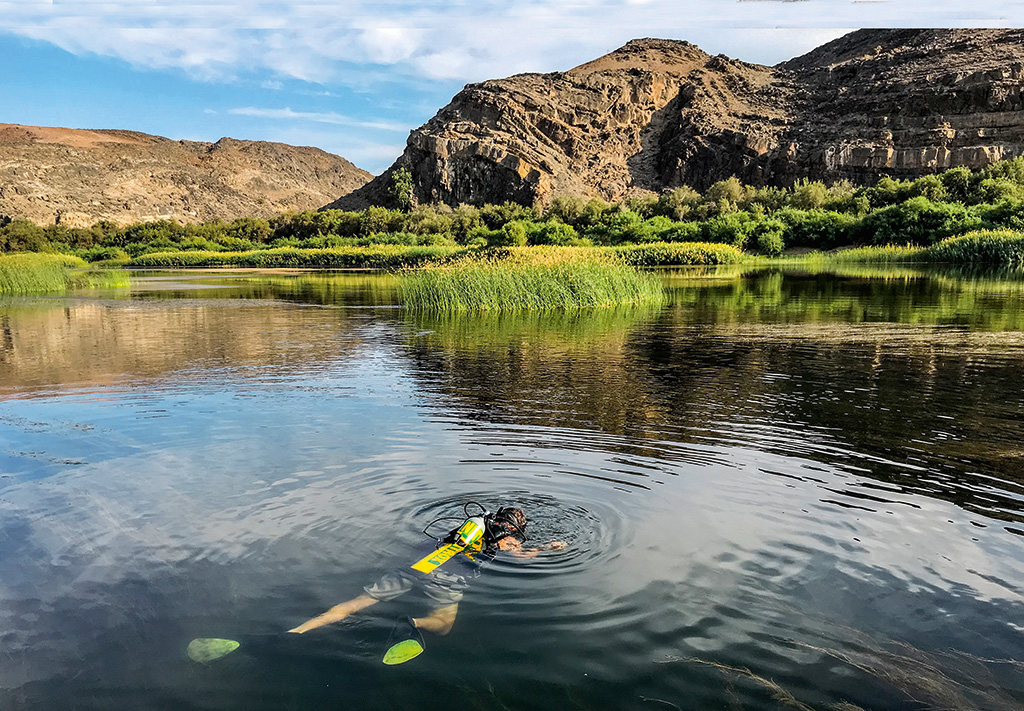
The author prepares to submerge while diving from the jetty at Richtersveld Wilderness Camp. Image credit: Zak O’Leary
Barely half an hour later we were unpacked and ready. To maximise the potential of the next two days we needed to work out the best camera settings for the available light, fine tune our dive gear and buoyancy so as not to stir up the silty bottom and destroy the visibility, and learn a little about the fish behaviour in order to make a close approach. We spent the rest of the afternoon playing under the jetty, swimming in the grassy river beds and out into the faster flowing water.
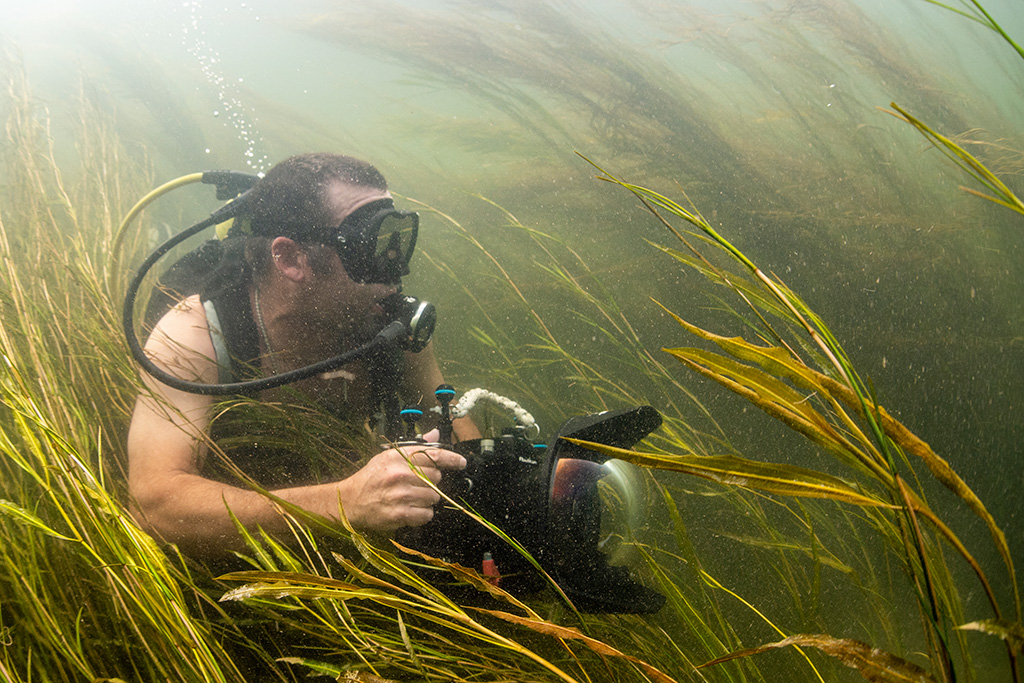
Zak O’Leary hides in the river grass as he stalks several shy fish species. Our first few dives were spent learning how to approach these rather skittish creatures. Image credit: Jean Tresfon
With the water temperature at a tropical 27ºC we realised that wetsuits were unnecessary. There were far more fish species than we had anticipated. Almost immediately we found schools of banded tilapia, a few Mozambique tilapia, hordes of Orange River mudfish, one or two smallmouth yellowfish, and even an African sharptooth catfish. Most were fairly shy, swimming away at first sight. The grassy beds were safe havens for juvenile fish, all darting deep into the weeds at the first sign of danger. After a couple of hours we climbed back on the jetty, far better prepared for our mission.

In the faster flowing sections of the river we found it easier to snorkel rather than use the bulkier scuba kit. Image credit: Jean Tresfon
The next morning we loaded the Prado with cylinders and cameras, and headed about 12 kilometres downriver to a set of rapids near Hammerkop, a journey of almost an hour through incredible terrain. Just as I thought I might lose my fillings on the rocky track, we arrived at our chosen spot just below a big rapid, where we figured the more oxygenated water would attract a larger number of fish. Two sharptooth catfish over a metre long came in close to have a look at me, a massive carp of more than 15 kilograms quickly passed, and then I saw something truly astounding — a small fish, later identified as a southern mouthbrooder, was sheltering against the river bank surrounded by a cloud of tiny fry. As soon as I moved in, a little too close for her comfort, she opened her mouth wide and started gulping in her babies.
After engulfing every last one she closed her mouth, spread her pectoral fins and raised her dorsal fin, literally bristling at me. I cursed myself for not being ready to capture this behaviour on camera, but a few minutes later I noticed another of these charismatic fish with fry nearby. I swung the camera up and hit the shutter button just as she too took all the babies into her mouth. Eventually we dragged ourselves out of the water into the 46-degree midday heat and headed back to camp.
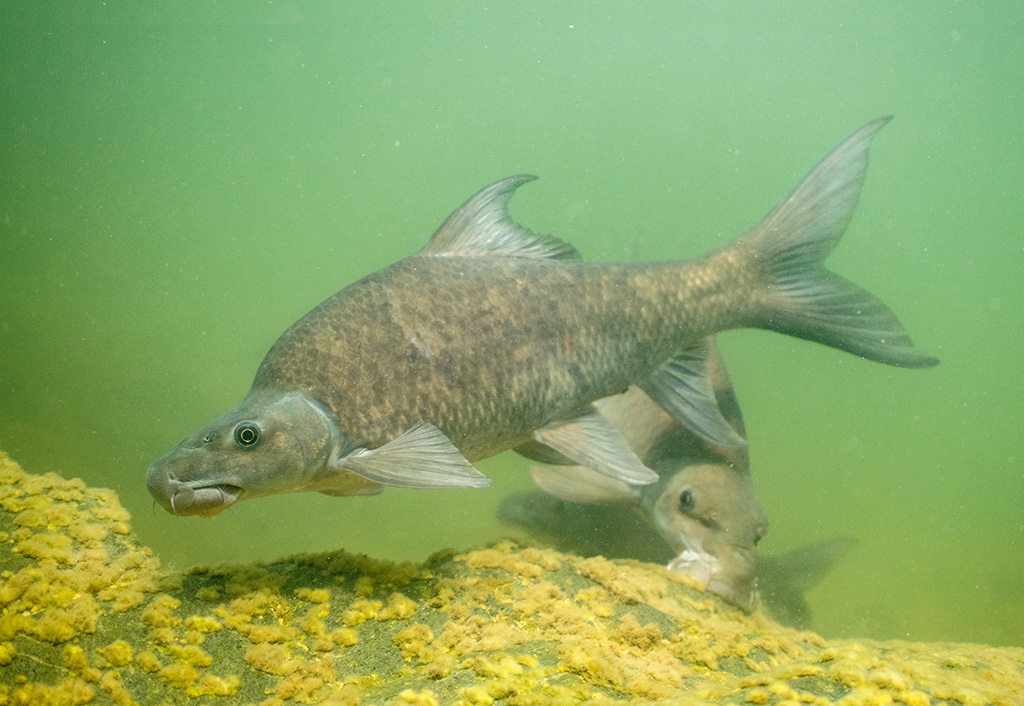
The Orange River mudfish has a mouth adapted for sucking algae off rock surfaces. Image credit: Jean Tresfon
For our last stint that day we decided on a rock jetty that juts out into the water. We loaded two of the camp kayaks with cylinders and cameras and set off for what turned out to be our deepest and most remarkable dive of the trip. After tying up the kayaks, donning the dive gear and sliding into the water, it was obvious that this spot was different to our previous dive sites. The rock shelf dropped abruptly into very dark and deep water.
I deflated my BCD (Buoyancy Control Device) and we dropped down slowly with nothing but darkness surrounding us. It was a very eerie experience, complete with thoughts of the legendary Orange River monster. After a minute the bottom came into view at a depth of eight metres with a huge rock wall in front of us. Hardly any natural light penetrated the water, and the tiny dive lights only lit a small section of the wall.

The southern mouthbrooder female taking all her fry into her mouth at the first sign of danger. Image credit:
Jean Tresfon
I had a bit of a scare when a very large catfish blurred past, obviously disturbed by our presence. Zak pointed to the wall and there we saw a massive sponge, probably a metre across. We spent about half an hour exploring every nook and cranny, finding several big catfish lying up on rocky ledges in the dark. Another strange find was a car roof lying on the sandy bottom, our first Orange River ‘wreck dive’. As we paddled back to the camp with the sun setting, my mind played through the sensory overload of the day.
Day two started with a repeat trip to the rapids near Hammerkop, but this time I chose to paddle the 12 kilometres downriver while Zak drove the 4×4 track there. The visibility at the rapids had deteriorated from the previous day, probably due to the rainfall when we arrived. After a couple of hours we moved to an island in the middle of the river about seven kilometres upstream where rocky walls and drop-offs bottomed out at four metres. Moving into the reed beds near the river banks we found a huge amount of activity with plenty of mudfish and tilapia in their breeding colours. Eventually we headed back to camp but couldn’t stay out of the water and we spent the late afternoon diving in front of the jetty.

The apex predator of the river is the sharptooth catfish, some of which grow to almost two metres. Image credit:
Jean Tresfon
On our last day the weather had changed and the air temperature was almost 20 degrees cooler. Walking down to the jetty early in the morning, the first thing we noticed was that the water visibility had worsened. It looked like we were done with the diving. All that remained was to pack up and head back to Cape Town after two days spent at the most unlikely of dive sites. A whole other world had opened up to us, however briefly.

Getting There
The Richtersveld Wilderness Camp is about 685km north of Cape Town on the N7 and 1 200km from Joburg via the N14. On the N7 at Vioolsdrif, just before the Namibian border post, turn left to Kotzeshoop and follow the gravel road for approximately 22km.
ALSO READ









